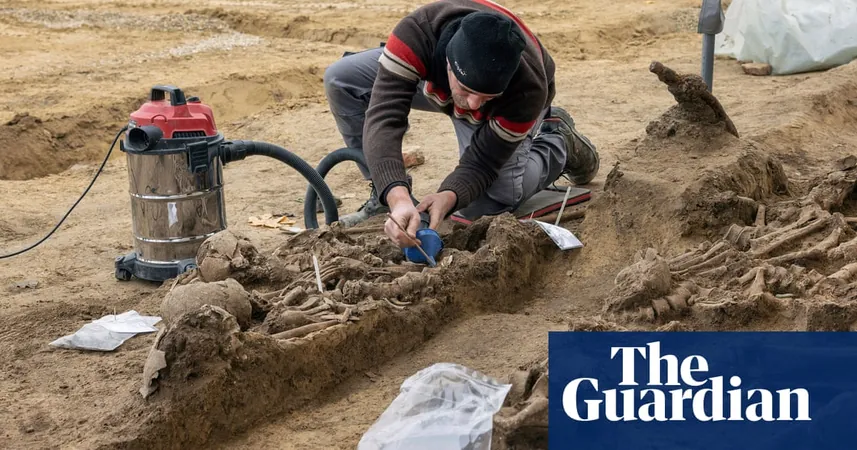
Ancient Mass Grave Unearthed Beneath Vienna Football Field: A Glimpse into Roman Warfare!
2025-04-03
Author: Ling
Ancient Mass Grave Unearthed Beneath Vienna Football Field: A Glimpse into Roman Warfare!
In a remarkable archaeological discovery, construction workers renovating a football pitch in Vienna stumbled upon a mass grave dating back to the Roman era. The find, which occurred last October, revealed a trove of intertwined skeletal remains believed to belong to warriors perished in a battle involving Germanic tribes during the first century AD.
This week, experts from the Vienna Museum revealed their findings during a presentation, linking the burial site to a significant military event in the region–the earliest evidence of combat in Vienna’s history. A total of 129 individuals have been confirmed at the site, located in the Simmering neighborhood, with estimates suggesting the number could exceed 150 as excavation continues.
Michaela Binder, who led the archaeological efforts, emphasized the uniqueness of this discovery. She remarked, "Within the context of Roman acts of war, there are no comparable finds of fighters. While there are extensive battlefields in Germany with weaponry evidence, the discovery of the dead is unprecedented throughout Roman history."
Typically, Roman soldiers were cremated until the third century; however, the manner in which these bodies were deposited in the grave indicates a rushed and chaotic burial. Examination of the skeletons reveals multiple injuries concentrated on the head, torso, and pelvis. Kristina Adler-Wölfl, head of the Vienna city archaeological department, asserted, "The presence of diverse battle wounds confirms this was a battlefield scenario—wounds from swords, lances, and blunt trauma indicate these individuals were actively involved in combat rather than executed prisoners."
All remains found are male, predominantly aged between 20 and 30, with generally good dental health further suggesting they were active fighters rather than low-ranking soldiers. Carbon-14 dating places the burial between AD 80 and AD 130, corroborated by artifacts discovered alongside the remains—traditional Roman military armor, helmet cheek protectors, and nails from sandals known as caligae.
A key artifact, a dagger characteristic of the time period between the mid-first century and early second century, has provided crucial dating information. So far, only one individual has been identified as a Roman legionary, and archaeological teams are hopeful that ongoing DNA and strontium isotope analyses will unveil more about these fighters and their affiliations.
The overwhelming evidence appears to connect this grave to the Danube campaigns of Emperor Domitian, conducted between AD 86 and AD 96. Archaeologists have also found indications of early settlements, laying the groundwork for what would eventually become the city of Vienna.
Stay tuned for further updates on this groundbreaking discovery that not only provides a glimpse into ancient warfare but also sheds light on the early history of one of Europe's most vibrant cities!




 Brasil (PT)
Brasil (PT)
 Canada (EN)
Canada (EN)
 Chile (ES)
Chile (ES)
 Česko (CS)
Česko (CS)
 대한민국 (KO)
대한민국 (KO)
 España (ES)
España (ES)
 France (FR)
France (FR)
 Hong Kong (EN)
Hong Kong (EN)
 Italia (IT)
Italia (IT)
 日本 (JA)
日本 (JA)
 Magyarország (HU)
Magyarország (HU)
 Norge (NO)
Norge (NO)
 Polska (PL)
Polska (PL)
 Schweiz (DE)
Schweiz (DE)
 Singapore (EN)
Singapore (EN)
 Sverige (SV)
Sverige (SV)
 Suomi (FI)
Suomi (FI)
 Türkiye (TR)
Türkiye (TR)
 الإمارات العربية المتحدة (AR)
الإمارات العربية المتحدة (AR)